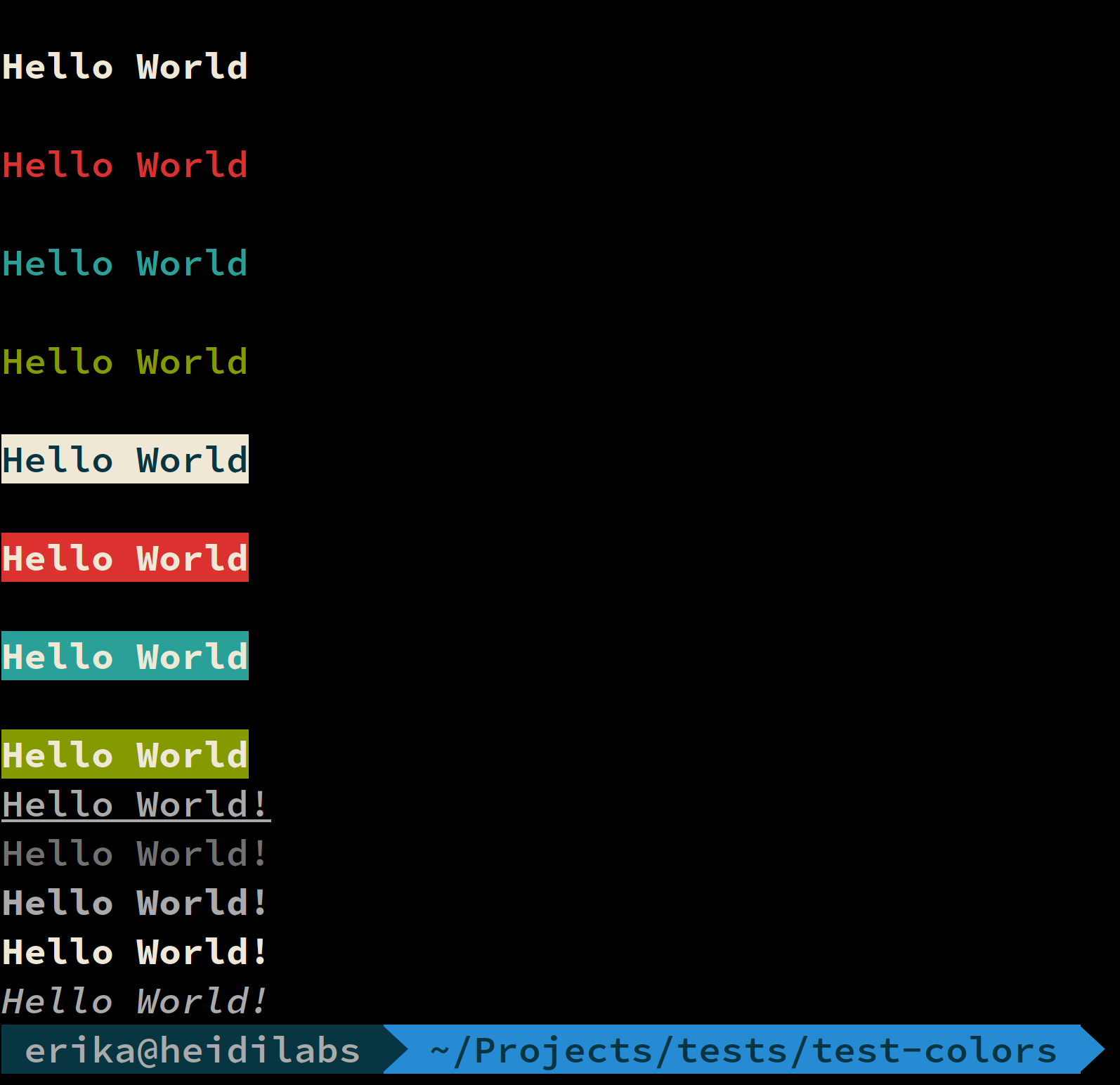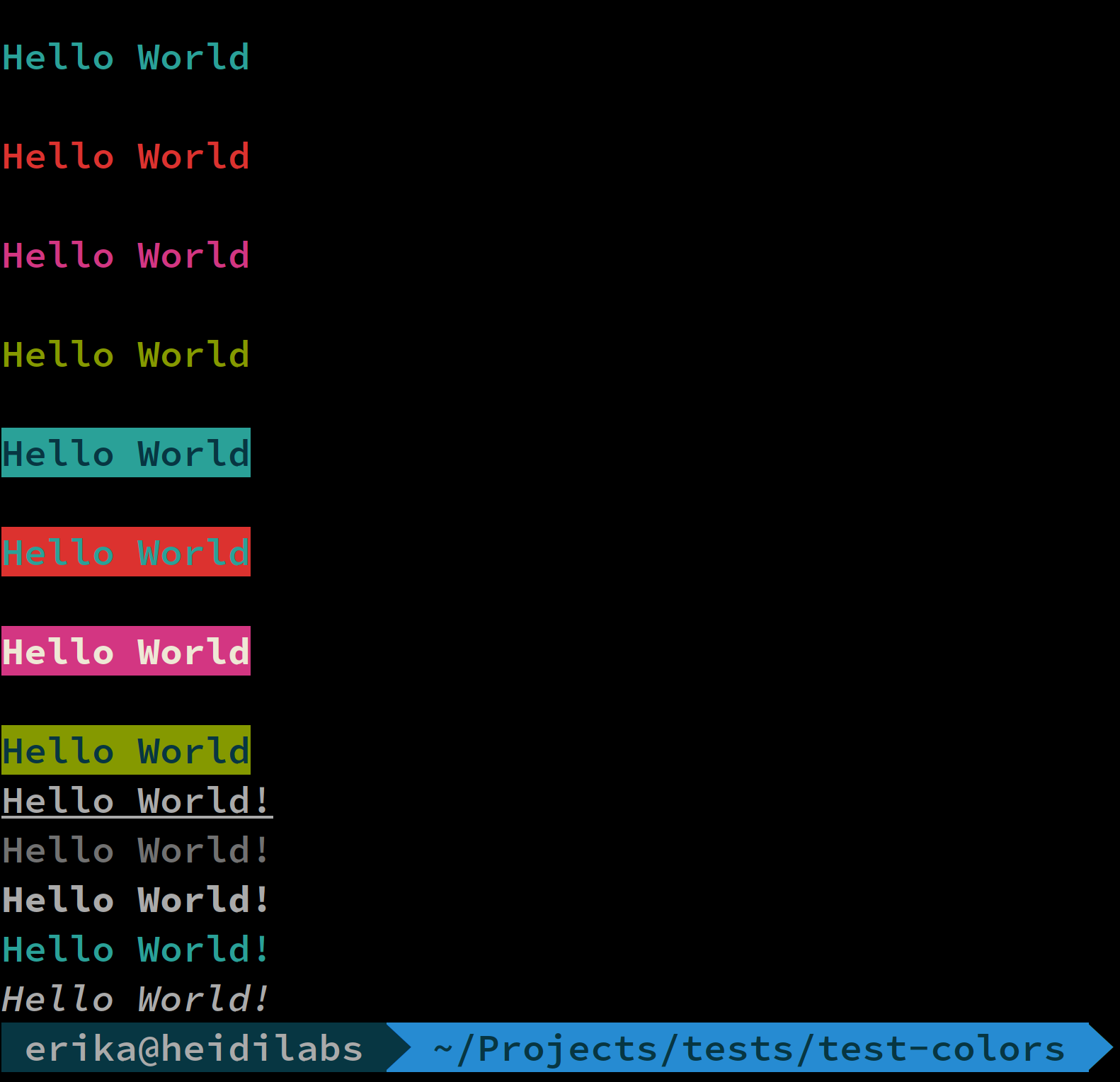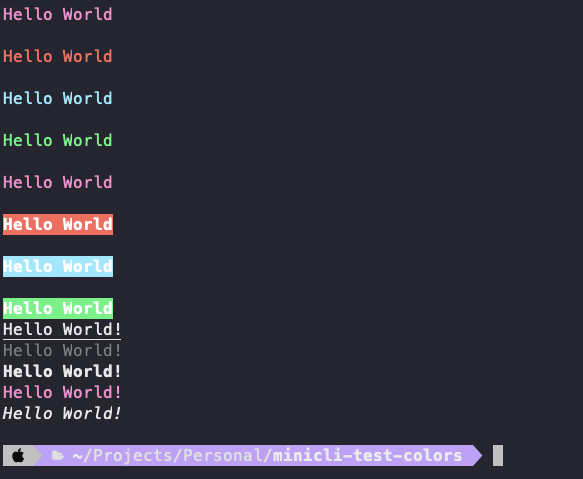Working with Color Themes
Minicli supports the use of color themes to change the style of command line output. The following built-in themes are currently available:
To set the theme, pass in a configuration array with a theme value when initializing the application. Built-in themes need a leading \ character:
| PHP |
|---|
| $app = new App([
'theme' => '\Unicorn'
]);
|
To use the default built-in theme, do not include the theme configuration setting, or set it to an empty string.
Creating a Custom Theme
User-defined themes can also be created and defined in your project. In this case, set the theme name including its namespace without a leading \:
| PHP |
|---|
| $app = new App([
'theme' => 'App\Theme\Blue'
]);
|
The above setting would use the following example theme:
| PHP |
|---|
| <?php
// File: app/Theme/BlueTheme.php
namespace App\Theme;
use Minicli\Output\Theme\DefaultTheme;
use Minicli\Output\CLIColors;
class BlueTheme extends DefaultTheme
{
public function getThemeColors(): array
{
return [
'default' => [ CLIColors::$FG_BLUE ],
'alt' => [ CLIColors::$FG_BLACK, CLIColors::$BG_BLUE ],
'info' => [ CLIColors::$FG_WHITE],
'info_alt' => [ CLIColors::$FG_WHITE, CLIColors::$BG_BLUE ]
];
}
}
|
User-defined themes only need to define styles which will override those in the default theme.
Theme screenshots
Default
When in doubt, stick to the default.

Unicorn
A more colorful theme than the default ¯_(ツ)_/¯

Dalton
A color-blind friendly theme contributed by Tom Benevides.

Dracula
A popular dark theme contributed by Abdelrhman Said.

Note
Note: Colors will vary depending on your CLI and system colors.
You can use the following Minicli script to reproduce this output:
| PHP |
|---|
| #!/usr/bin/env php
<?php
if (php_sapi_name() !== 'cli') {
exit;
}
require __DIR__ . '/vendor/autoload.php';
use Minicli\App;
use Minicli\Exception\CommandNotFoundException;
$app = new App([
'app_path' => __DIR__ . '/app/Command',
'debug' => true,
'theme' => '\Unicorn'
]);
$app->registerCommand('test', function () use ($app) {
$app->display("Hello World");
$app->error("Hello World");
$app->info("Hello World");
$app->success("Hello World");
$app->display("Hello World",true);
$app->error("Hello World",true);
$app->info("Hello World",true);
$app->success("Hello World",true);
$app->out("Hello World!\r\n", 'underline');
$app->out("Hello World!\r\n", 'dim');
$app->out("Hello World!\r\n", 'bold');
$app->out("Hello World!\r\n", 'inverted');
$app->out("Hello World!\r\n", 'italic');
});
try {
$app->runCommand($argv);
} catch (CommandNotFoundException $notFoundException) {
$app->error("Command Not Found.");
return 1;
} catch (Exception $exception) {
if ($app->config->debug) {
$app->error("An error occurred:");
$app->error($exception->getMessage());
}
return 1;
}
return 0;
|



